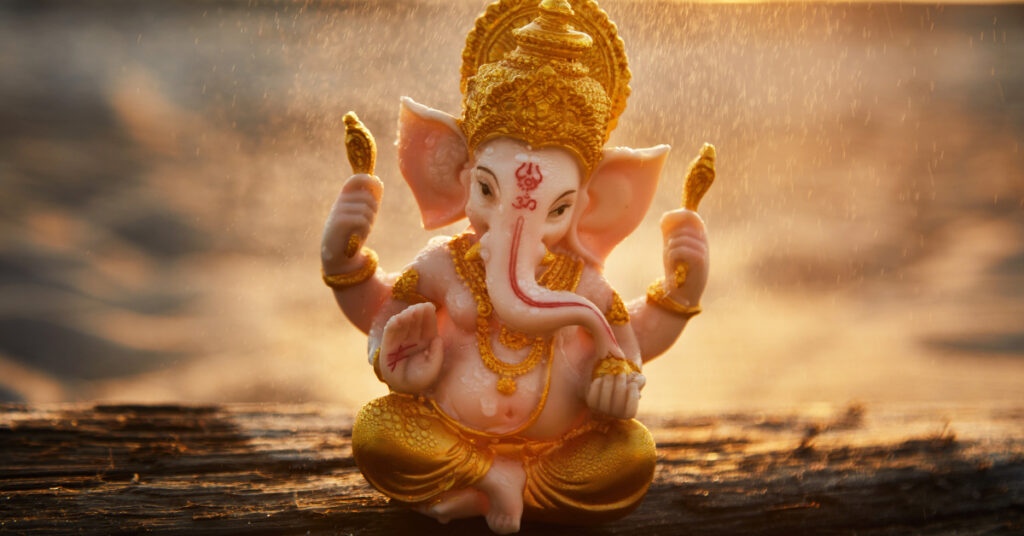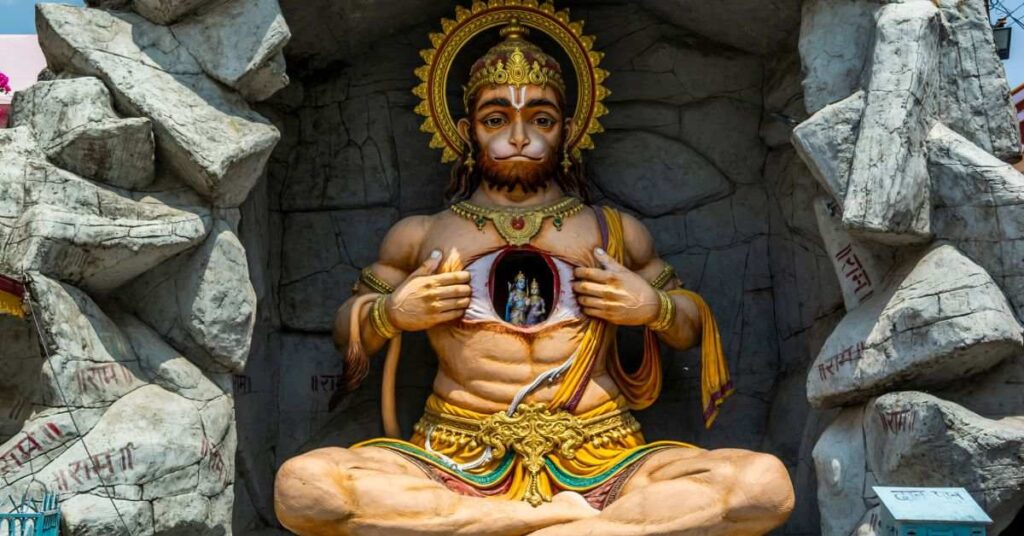The tale of Lord Rama is one that resonates deeply within Hindu culture and mythology. It is a narrative rich with virtuous quests, steadfast loyalty, and the battle between good and evil. The legacy of Rama, born in the line of the Sun, is not only a cornerstone of Hindu faith but has also permeated literature, art, and the daily lives of millions around the globe. Within this epic, the Ramayana, lies the grand saga of Rama’s life, but it is the circumstance of his death that has long captivated the curious and the devout alike. Is it a tale of a god-king departing his mortal coil, a divine avatar merging into eternity, or a story designed to convey deeper philosophical truths? Let’s embark on a journey to understand the various mythological accounts and the enigmatic farewell of Lord Rama.
Introduction
Lord Rama, often referred to as Maryada Purushottama or the perfect man, is a central figure in the pantheon of Hindu deities. His values of righteousness, loyalty, and integrity are celebrated as the standard for human conduct. The Ramayana, attributed to the sage Valmiki, narrates the life and adventures of Rama, from his birth to his triumph over the demon-king Ravana. The text is not just a religious scripture; it is considered a historical and moral guide that illuminates the human struggle against the darker aspects of existence and the ultimate victory of light.
The Life and Adventures of Lord Rama
The story of Rama begins with his birth in the kingdom of Ayodhya to King Dasharatha and Queen Kausalya. It follows Rama’s upbringing as a noble prince, his marriage to Sita, and the subsequent twists and turns that lead to his fourteen-year exile in the forest. The narrative details the challenges he faces there, including the abduction of Sita by Ravana, the demon-king of Lanka. Rama’s journey is one of trial and tribulation leading to his formidable alliance with Hanuman, the monkey god, and a great army of Vanaras who aid him in the conquest of Lanka.
Rama’s tale is steeped in dharmic principles, with his adherence to duty and the universal laws of righteousness guiding his actions. His chariot, the perfect bow he wields, and his ever-wise counsel are iconic representations of his valour, grace, and wisdom. The pasura or virtues he embodies are extolled in temples and homes, a tradition that echoes his enduring influence in Hindu society.
The Departure of Lord Rama
At the behest of his father and the machinations of his stepmother Kaikeyi, Rama was exiled from Ayodhya. Despite the apparent unfairness of the decree, Rama accepted his fate with equanimity, upholding the honor of his father and his duty as a prince. This seminal moment in Rama’s life illuminates the complexity of duty and the cost of nobility. It is both a demonstration of unwavering obedience and, perhaps, the first hint of the ephemeral nature of life on earth.
The Battle with Ravana
The lengthy and complex narrative of the Ramayana is dominated by the conflict between Rama and Ravana. The story is much more than a mere physical battle—it is a symbolic struggle between dharma and adharma, or righteousness and its opposite. It is during this period that Rama is confronted with the demon-king’s deception, which included the illusory golden deer that lured him away from Sita and the challenges faced by Lakshmana, who guarded her.
Rama’s battle tactics and strategies, often aided by his loyal companions, are a testament to his tactical wit and martial prowess. His commitment to Sita during her captivity and his eventual victory over Ravana showcase his unwavering resolve and love for his consort.
Return to Ayodhya and Rule
The return of Rama to Ayodhya after the defeat of Ravana is commemorated in the festival of Diwali (Deepavali), which symbolizes the triumph of light over darkness. Upon his return, Rama fulfills his promise to his father and ascends to the throne of Ayodhya. However, this is not the end of his challenges. The anguished doubts about Sita’s purity and the expectations of his subjects test Rama’s ability to rule justly and with compassion.
The rule of Rama is often characterized as a golden age, an era of peace and prosperity where there is no poverty, no natural disasters, and no crime. This utopian vision, rooted in myth, demonstrates the ideal of kingship and governance that have inspired countless rulers and leaders over the ages.
The End of Lord Rama’s Mortal Life
Rama’s life, as detailed in various versions of the Ramayana, spanned over many years from his birth to Sita’s banishment to the forest and his eventual coronation as king. Yet, his departure from the mortal realm, the manner and timing of his death, remains one of the most enigmatic aspects of his story. Most editions of the Ramayana end with Rama’s return to Ayodhya and the birth of his sons, but his end is hinted at in the Uttara Kanda, the final section of the text.
The Uttara Kanda introduces a grief-stricken Rama who, after witnessing a disharmonious interaction between a Shudra and a brahmin, decides to leave his mortal form. This interpretation of Rama’s death is not accepted in all sects of Hinduism, and there are multiple variations, including ones where Rama is transported directly to Vaikuntha, the abode of Lord Vishnu, and those where he performs a self-immolation in the Sarayu River.
Mythological Interpretations and Legends
The account in the Uttara Kanda led to multiple rebukes and controversies, with some even rejecting it as an addition to Valmiki’s original Ramayana. Scholars and devotees point to the structural and tonal differences between the sections as evidence of their independent nature.
Some sects within Hinduism hold that Rama did not actually die but rather transitioned into para-nirvana, a state beyond the reach of mortals. According to this view, Rama is eternally present, providing succor and guidance to his devotees.
Alternatively, there is a belief that Rama’s self-immolation was a ploy to escape the curse of a Shudra, who was the erstwhile king. The curse demanded that Rama suffer the same fate as the Shudra’s departed son, and so Rama chose to relinquish his mortal form. The ambiguity surrounding Rama’s death serves as a canvas for various sects and thinkers to project their interpretation of the divine.
The legend of the death of Lord Rama is intertwined with philosophical notions about the nature of the divine and human existence. By leaving his mortal body behind, Rama demonstrates the impermanence of life and the inevitability of death, even for incarnations of the divine. This transient nature, as exemplified by Rama, is a central tenet of Hindu thought and spirituality, urging followers to seek liberation from the cycle of birth and rebirth, samsara.
Conclusion
The story of Lord Rama and, in particular, the mystery surrounding his departure from the mortal world, continues to fascinate scholars and devotees. It is a narrative that transcends time and place, inviting us to contemplate the essence of divinity and human life. Whether viewed as a historical figure, a divine avatar, or a literary character, Rama’s legacy endures, inspiring followers to walk the path of righteousness, embrace the trials of life, and seek truth and harmony in all things. His tale is one of sacrifice, love, and the eternal struggle against the forces that seek to upheave the moral order. It is in the exploration and understanding of such profound narratives that we find not mere answers, but a journey into the very soul of a culture, a faith, and the human experience.


